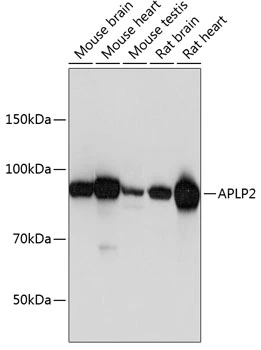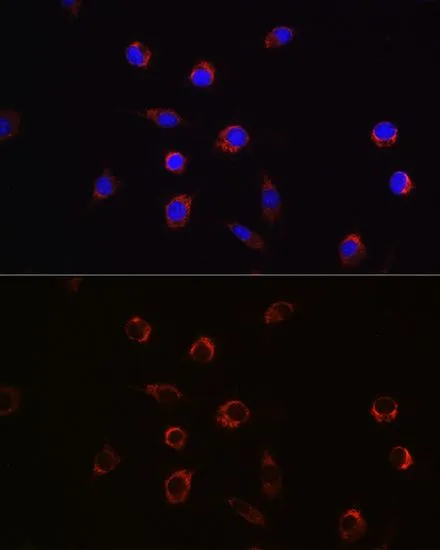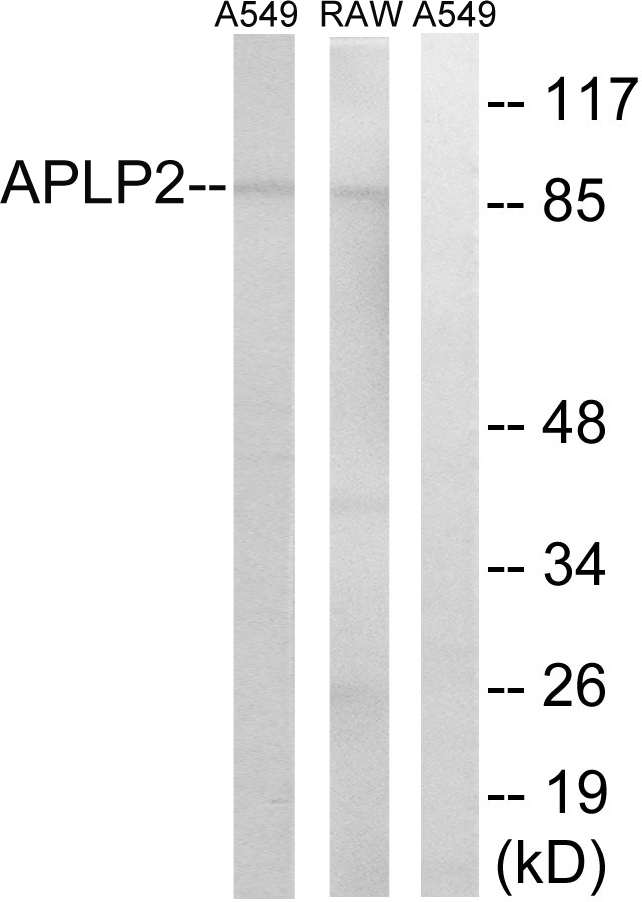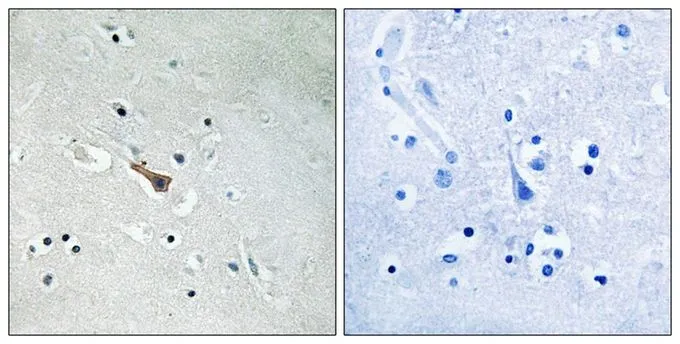
WB analysis of various sample lysates using GTX33014 APLP2 antibody. Dilution : 1:1000 Loading : 25microg per lane
APLP2 antibody
GTX33014
ApplicationsImmunoFluorescence, Western Blot, ImmunoCytoChemistry
Product group Antibodies
ReactivityHuman, Mouse, Rat
TargetAPLP2
Overview
- SupplierGeneTex
- Product NameAPLP2 antibody
- Delivery Days Customer9
- Application Supplier NoteWB: 1:500 - 1:2000. ICC/IF: 1:50 - 1:200. *Optimal dilutions/concentrations should be determined by the researcher.Not tested in other applications.
- ApplicationsImmunoFluorescence, Western Blot, ImmunoCytoChemistry
- CertificationResearch Use Only
- ClonalityPolyclonal
- ConjugateUnconjugated
- Gene ID334
- Target nameAPLP2
- Target descriptionamyloid beta precursor like protein 2
- Target synonymsAPLP-2, APPH, APPL2, CDEBP, amyloid beta precursor like protein 2, CDEI box-binding protein, amyloid beta (A4) precursor-like protein 2, amyloid precursor protein homolog HSD-2, sperm membrane protein YWK-II, testicular tissue protein Li 23
- HostRabbit
- IsotypeIgG
- Protein IDQ06481
- Protein NameAmyloid beta precursor like protein 2
- Scientific DescriptionThis gene encodes amyloid precursor- like protein 2 (APLP2), which is a member of the APP (amyloid precursor protein) family including APP, APLP1 and APLP2. This protein is ubiquitously expressed. It contains heparin-, copper- and zinc- binding domains at the N-terminus, BPTI/Kunitz inhibitor and E2 domains in the middle region, and transmembrane and intracellular domains at the C-terminus. This protein interacts with major histocompatibility complex (MHC) class I molecules. The synergy of this protein and the APP is required to mediate neuromuscular transmission, spatial learning and synaptic plasticity. This protein has been implicated in the pathogenesis of Alzheimers disease. Multiple alternatively spliced transcript variants encoding different isoforms have been identified. [provided by RefSeq, Aug 2011]
- ReactivityHuman, Mouse, Rat
- Storage Instruction-20°C or -80°C,2°C to 8°C
- UNSPSC12352203






